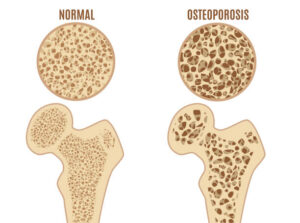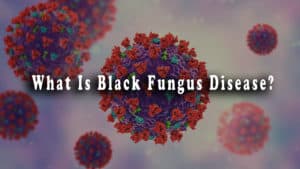What are top 5 rarest diseases?
Morgellons Disease: a rare and controversial condition characterized by the presence of fibers or “filaments” that protrude from the skin.
Fibrodysplasia ossificans progressiva (FOP): a rare genetic disorder characterized by the formation of bone tissue in muscles, tendons, ligaments, and other connective tissues.
Progeria: a rare genetic disorder characterized by the rapid aging of children, leading to the death of most patients in their teens.
Huntington’s disease: a rare inherited disorder that causes the progressive breakdown of nerve cells in the brain.
Creutzfeldt-Jakob disease (CJD): a rare, degenerative, fatal brain disorder that affects about one person in every one million per year worldwide.
Morgellons Disease
Morgellons Disease is a rare and controversial condition that is characterized by the presence of fibers or “filaments” that protrude from the skin. Other symptoms associated with the condition include skin rashes, itching, and the sensation of something crawling under the skin. People with Morgellons Disease also often experience fatigue, memory loss, and difficulty concentrating.
The cause of Morgellons Disease is not well understood and the condition is not recognized by mainstream medicine as a distinct disease. Some medical experts believe that it may be a form of delusional parasitosis, a condition in which individuals have a false belief that they are infected with parasites. Other experts suggest that Morgellons Disease may be related to chronic Lyme disease, or a result of an abnormal immune response to an infection.
There is no specific treatment for Morgellons Disease, and treatment is typically focused on relieving symptoms and addressing any underlying conditions that may be contributing to the disorder. Some individuals with Morgellons Disease have reported improvement with the use of antibiotics, antipsychotics, and/or antidepressants.
It is important to note that Morgellons Disease is a controversial and not widely accepted condition by the medical community, and more research is needed to understand the cause and appropriate treatment of the disease.
Fibrodysplasia ossificans progressiva
Fibrodysplasia ossificans progressiva (FOP) is a rare genetic disorder that causes the formation of bone tissue in muscles, tendons, ligaments, and other connective tissues. This results in the gradual restriction of movement in affected individuals, as the extra bone growth causes the joints to fuse. FOP is also known as “stone man syndrome”.
FOP is caused by a genetic mutation in the ACVR1 gene, which leads to an abnormal activation of the bone morphogenetic protein (BMP) pathway. This results in the abnormal formation of bone tissue in soft tissue, leading to the progressive ossification of muscles, tendons, and ligaments.
Symptoms of FOP typically begin in early childhood, with the formation of extra bone in the neck and shoulders, and may also include malformations of the big toes at birth. As the condition progresses, other areas of the body such as the chest, back, and limbs can be affected, leading to a gradual loss of mobility.
There is no cure for FOP, and treatment is focused on managing symptoms and preventing further bone growth. Management of FOP may include the use of non-steroidal anti-inflammatory drugs (NSAIDs) to reduce pain and inflammation, physical therapy to maintain range of motion and prevent contractures, and surgery to remove any tumors or other abnormal growths.
Due to its rarity, the diagnosis of FOP can be challenging and often delayed, so a multidisciplinary approach is often recommended. Genetic testing is available to confirm the diagnosis of FOP.
Progeria
Progeria, also known as Hutchinson-Gilford Progeria Syndrome (HGPS), is a rare genetic disorder that causes the rapid aging of children, leading to the death of most patients in their teens. The name “progeria” comes from the Greek word “progeros” which means “prematurely old.”
Progeria is caused by a mutation in the LMNA gene, which leads to the production of an abnormal form of lamin A protein. This abnormal protein interferes with the normal structure and function of the cell nucleus, leading to a variety of aging-related changes in the body.
Symptoms of progeria typically appear in the first 2 years of life and include a distinctive appearance characterized by a large head, small face, and a thin, pinched nose. Other symptoms include failure to thrive, growth failure, hair loss, joint stiffness, and cardiovascular problems such as atherosclerosis and heart attacks.
There is no cure for progeria, and treatment is focused on managing symptoms and preventing complications. Management of progeria may include the use of growth hormone therapy to improve growth and weight gain, physical therapy to maintain range of motion and prevent contractures, and regular monitoring for cardiovascular complications.
Due to its rarity, the diagnosis of progeria can be challenging, and a multidisciplinary approach is often recommended. Genetic testing is available to confirm the diagnosis of progeria and to identify specific mutations in the LMNA gene.
Huntington's disease
Huntington’s disease (HD) is a rare inherited disorder that causes the progressive breakdown of nerve cells in the brain. It is a neurodegenerative disorder that causes both motor and cognitive symptoms. The condition is caused by a genetic defect in a single gene located on chromosome 4, the Huntingtin gene, which leads to the production of an abnormal form of the huntingtin protein.
The symptoms of HD typically appear in the individual in their 30s or 40s, but can occur as early as childhood or as late as the 60s. The symptoms include uncontrolled movements, muscle stiffness, balance and coordination problems, cognitive decline and behavioral changes, such as depression, irritability, and apathy. As the disease progresses, individuals with HD may also experience difficulty speaking, swallowing, and may become unable to walk.
There is no cure for HD, and treatment is focused on managing symptoms and providing support for individuals and their families. Medications can help manage the symptoms of HD such as chorea (involuntary movements), depression, anxiety, and psychosis. Physical, speech and occupational therapy can help with motor and cognitive impairment. Genetic testing is available to confirm the diagnosis of HD and to identify specific mutations in the Huntingtin gene.
It’s important to note that HD is a genetic disorder that is inherited in an autosomal dominant manner, meaning that if one parent has the mutation, there is a 50% chance that each of their children will inherit the mutation and develop the disease.
Creutzfeldt-Jakob disease
Creutzfeldt-Jakob disease (CJD) is a rare, degenerative, fatal brain disorder that affects about one person in every one million per year worldwide. CJD belongs to a family of disorders known as transmissible spongiform encephalopathies (TSEs), which are characterized by the formation of abnormal proteins called prions in the brain.
CJD has several different forms, including sporadic CJD, which occurs spontaneously and accounts for about 85% of cases, familial CJD, which is inherited and accounts for about 10-15% of cases, and acquired CJD, which is acquired through exposure to contaminated tissue or medical procedures, such as transplantation of contaminated dura mater or treatment with contaminated human growth hormone.
Symptoms of CJD typically begin with rapidly progressive dementia, followed by neurological symptoms such as memory loss, confusion, and changes in behavior and mood. Other symptoms include visual disturbances, muscle stiffness, twitching, and difficulty walking. As the disease progresses, individuals with CJD may become blind, bedridden, and unable to communicate.
There is no cure for CJD, and treatment is focused on managing symptoms and providing support for individuals and their families. There are few treatments available, and most of them are symptomatic, such as medications to control seizures and to manage anxiety and depression. Genetic testing is available to confirm the diagnosis of familial CJD and to identify specific mutations in the PRNP gene.
Due to the rapidly progressing nature of the disease and the fact that it is fatal, CJD is considered a medical emergency. Diagnosis is often difficult and is typically based on a combination of clinical, laboratory, and imaging findings.



